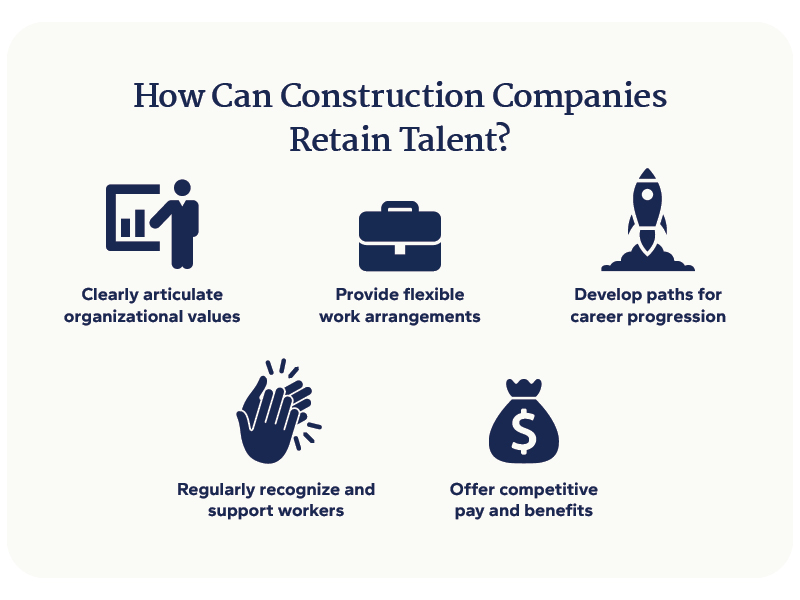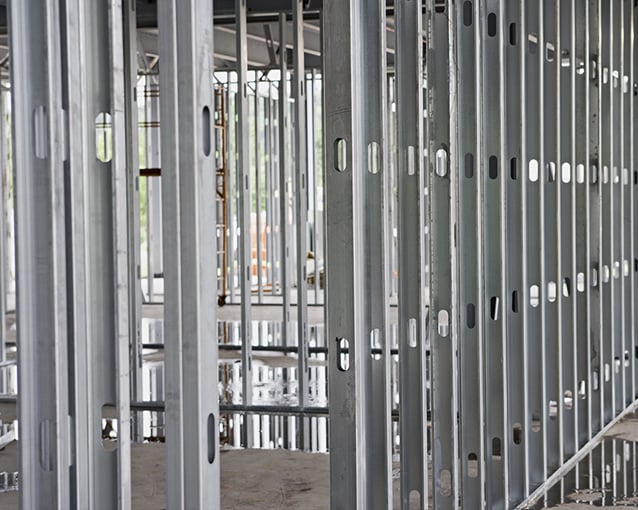Key Takeaways
- To break the turnover cycle, companies must implement more flexible work arrangements, articulate their values, and develop clear paths for career progression.
- When it comes to technology, the best strategy for many construction companies is to start with optimizing their existing tools, rather than seeking out new investments.
- Developing mentorship programs can help bridge the gap between generations and protect valuable institutional knowledge.
As we approach 2025, the construction industry stands at a crossroads of disruption and opportunity. Workforce shortages, volatile costs, and rising compliance demands are reshaping the landscape, and companies that can adapt will set themselves apart.
The most successful leaders are focusing on agility and resilience, laying the groundwork to thrive amidst change. Here’s how to reinforce your organization’s foundation across key growth areas.
Building a Resilient Workforce
The labor shortage remains one of the industry's most persistent issues.
Associated Builders and Contractors estimates construction will need to bring in nearly 454,000 new workers — on top of normal hiring — to balance supply and demand in 2025.
Traditional construction environments lack flexibility, and the stigma around fieldwork often drives younger talent away from the industry. Those who do pursue careers in construction see impressive starting salaries — usually much higher than those of long-term employees. This impacts morale and drives turnover even among tenured staff.
When staff leave, mid-level managers become burdened with additional responsibilities. This leads to burnout and ultimately traps construction companies in a continuous cycle of employee churn.
Companies must focus on initiatives that foster a stable, engaged workforce to break the pattern. Roles that can accommodate hybrid work arrangements or four-day workweeks should do so. Organizations with strong, well-articulated values and regular recognition practices also tend to retain employees more effectively.

If staffing shortages persist, outsourcing specialized or administrative roles is an effective strategy. For example, outsourced CFO services help manage finances without the cost of a full-time executive, and outsourced IT teams can oversee data management and cybersecurity. This allows construction companies to bridge skill gaps, reduce overhead, and remain agile in a competitive labor market.
Leveraging Technology
While construction has traditionally been slow to adopt new technologies, leaders are increasingly aware of the productivity gains these tools offer.
With compliance requirements on the rise — especially for federally funded projects — digital solutions can reduce manual errors, accelerate compliance, and align project teams.
Here’s how future-focused construction companies are approaching this growth area:
Optimize Existing Tools
Many businesses are using some technology — such as equipment telematics or project management software — but not to its full potential. Making the most of the technology you already have can boost your organization’s growth, foster alignment between business goals and tech strategy, and strengthen security.
Digitize Project Documentation
Centralized project documentation platforms can make it easier to track submittals, pay estimates, and revisions. With a single source of truth, collaboration will improve among stakeholders and compliance efforts will be more accurate.
Explore AI-Driven Solutions
From generating meeting minutes to automating invoice processing, AI provides valuable, low-cost ways to save time and enhance accuracy. AI-driven systems can also assist in contract review, archiving, and accessing historical project data, which streamlines operations and reduces the burden on staff for administrative tasks.
Enhancing Financial Stability
Achieving and maintaining profitability remains a top priority for the industry amid fluctuating costs and a competitive bidding environment.
Some contractors leverage their reputations to secure higher-paying projects, particularly those with limited competition. On the other hand, many family-owned businesses choose to stabilize cash flow by diversifying income streams through asset ownership. For instance, owning office spaces and leasing them back to the business creates additional revenue while controlling rental expenses.
Diversifying clientele and project scope also shields companies from market volatility. Heavy construction and infrastructure projects, which are often federally funded and less affected by economic cycles, are seeing increased demand. Expanding offerings to include these types of projects balances higher-risk ventures with more stable revenue streams.
Standardized Cost Codes
Establishing standardized cost codes — along with retrofitting historic data into these codes — should be a key initiative. Standardized codes enable consistent tracking of production rates (e.g., 10 labor hours for forming 400 square feet of substructure wall), offering current and future teams a clearer view of how projects are built, and which factors impact production and profitability.
You must build it on paper during the bid if you expect to build it in real life.
To effectively prepare for upcoming bids, contractors should establish a financial framework using standardized cost codes alongside their project plans.
Succession Planning
The construction workforce has an uneven generational distribution, with a shortage of Gen X leaders ready to fill gaps as Baby Boomers retire. Companies are increasingly concerned about losing valuable institutional knowledge.
Larger contractors have found success piloting mentorship programs, pairing experienced superintendents or field leaders with younger, tech-savvy employees. This not only helps with knowledge transfer but also fosters mutual respect between the generations.
Companies that excel in succession planning are better positioned for long-term stability and success. By building robust mentorship structures and embedding institutional knowledge within their operations, these companies can maintain continuity through leadership transitions.
Shaping Your Future with a Sound Strategy
Now is the time to build a future-ready foundation that will allow your company to thrive through change and drive sustained value in an evolving market.
From fostering a resilient workforce to leveraging technology, enhancing financial stability, and planning for seamless succession, each of these key strategies will empower your construction entity to navigate industry challenges and opportunities.
Expand Your Business with a Trusted Advisor



